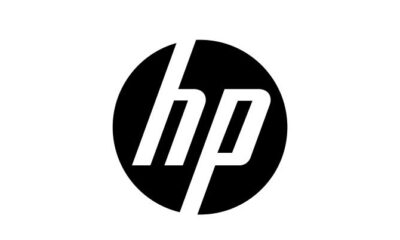Finance
The USD LIBOR panel ceases at end-June 2023: Are you ready?

It is now less than 90 days until the USD LIBOR panel ceases on 30 June 2023, marking another critical milestone in the necessary transition to robust Risk-Free Reference Rates (RFRs).
Following the successful cessation of the GBP LIBOR panel and widespread market adoption of the Sterling Overnight Index Average (SONIA), the Working Group on Sterling Risk-Free Reference Rates (the Working Group) concluded that it had met its original objective to ‘catalyse a broad-based transition to SONIA across sterling derivative, loan and bond markets’. To address the remaining transition priorities, particularly USD LIBOR transition, it revised its objective in April 2022 to focus on the implications of non-GBP LIBOR transition in UK markets and transitioning legacy GBP LIBOR contracts. The Bank of England (the Bank) and the Financial Conduct Authority (the FCA) are ex-officio members of the Working Group.
To finalise the transition, the Bank, FCA and Working Group encourage market participants to:
- Actively transition USD LIBOR contracts ahead of the cessation of the USD LIBOR panel at end-June 2023;
- Ensure readiness for implementation of USD LIBOR fallbacks, including planned CCP conversion events and operationalisation of the ISDA 2020 IBOR Fallbacks Protocol;
- Ensure they transition to the most robust RFRs; and,
- Continue to actively transition any remaining legacy contracts from synthetic GBP LIBOR to SONIA.
Transition from USD LIBOR
The transition from USD LIBOR remains of critical importance globally, including in the UK where many firms are active in USD interest rate markets.
The FCA recently announcedOpens in a new window its decision to require LIBOR’s administrator to continue the publication of the 1-, 3- and 6-month USD LIBOR settings using a synthetic methodology, for a short period after end-June 2023, and to permit its use in all legacy contracts except cleared derivatives. The FCA intends to cease requiring that publication at end-September 2024.
The FCA has been clear that synthetic LIBOR is a temporary bridge to RFRs, hence active transition of legacy USD LIBOR contracts ahead of end-June 2023, wherever practicable, remains the best way for market participants to retain control and certainty over their existing contracts. This is in line with recommendationsOpens in a new window from US authorities and the Alternative Reference Rates Committee (the ARRC) who have highlighted the importance of acting now to remediate contracts to avoid a pile-up ahead of key dates.
Key operational events for USD LIBOR transition
The adoption of robust fallbacks has been a critical step in reducing the risks associated with the cessation of LIBOR. Inclusion of fallbacks in ISDA’s Definitions for all USD LIBOR trades entered into since 25 January 2021 and widespread adherence to the ISDA IBOR Fallbacks ProtocolOpens in a new window, combined with planned conversion processes by central counterparties (CCPs), provide an orderly transition path for USD LIBOR interest rate derivatives. The ISDA IBOR Fallbacks Protocol remains open for adherence where firms have not yet done so.
CCP conversion events successfully transitioned cleared contracts for GBP, JPY, CHF and EUR LIBOR settings in December 2021footnote[1]. In a similar way, CCP conversion events will be utilised for the transition of cleared USD LIBOR contracts, with the proposed timings of conversion events set out in the table below.
The Bank, FCA and Working Group encourage market participants to ensure they have clear plans, resourcing and oversight in place to support a smooth transition over these CCP conversions, as well as the Index Cessation Effective Date (for the purposes of the ISDA IBOR Fallbacks Protocol and ISDA Definitions) on 3 July 2023. Additionally, market participants should act on any lessons learned from GBP, JPY, CHF and EUR LIBOR conversions.
Planned CCP conversion processes of outstanding LIBOR USD contracts to RFRs
| CCP | Product | Timing of planned conversion |
|---|---|---|
| LCHOpens in a new window | Swaps | 22 – 23 April 2023 (Swaps tranche 1)
20 – 21 May 2023 (Swaps tranche 2) |
| CMEOpens in a new window | Swaps, futures and options | Weekend beginning 24 March 2023 (Swaps pre-conversion splitting)
Weekend beginning 14 April 2023 (Futures and options) Weekend beginning 21 April 2023 (Swaps tranche 1) Weekend beginning 3 July 2023 (Swaps tranche 2) |
| EurexOpens in a new window | Swaps | Weekend beginning 21 April 2023 |
Ensuring transition to the most robust RFRs
The ARRC’s recommended alternative RFR to USD LIBOR is the Secured Overnight Financing Rate (SOFR)footnote[2]. The Bank, FCA and Working Group are encouraging market participants to transition to the most robust rates for the relevant currency, such as SOFR for USD and SONIA for GBP.
Similar to the guidance on use of term SONIA in the UK, market participants should ensure their use of term SOFR is limited and consistent with the ARRC’s best practice recommendationsOpens in a new window on the scope of use, and in line with guidance issued by the Financial Stability BoardOpens in a new window and the Financial Policy Committee (the FPC). Market participants are reminded that term SOFR use cases published by the ARRC are relevant to USD markets. For GBP markets, the Working Group has publishedOpens in a new window guidance on the appropriate use of term SONIA.
With the transition away from LIBOR in its final stages, credit sensitive rates (CSRs) should not emerge as successor rates, supported by the FPC’s view that these rates are not robust or suitable for widespread use as a benchmark. The FCAOpens in a new window and FPC have communicated to the market that USD CSRs have the potential to reintroduce many of the financial stability risks associated with LIBOR.
Although good progress with GBP transition has been made, there is still work to be done.
Synthetic GBP LIBOR is a temporary bridging tool to aid the smooth transition of contracts and was introduced to mitigate the risk of widespread disruption to legacy GBP LIBOR contracts which had not transitioned by or at end-2021, when the GBP LIBOR panel ended.
The FCA announcedOpens in a new window its decision to allow 1- and 6-month synthetic GBP LIBOR to cease at end-March 2023 and 3-month synthetic GBP LIBOR to ceaseOpens in a new window at end-March 2024. With the successful cessation of 1- and 6-month GBP LIBOR, firms should continue to actively transition any remaining legacy GBP LIBOR contracts to robust alternative rates such as SONIA.
The Bank’s Prudential Regulation Authority and FCA will continue to monitor transition progress of supervised firms, including through regular data collection.
Next Steps
The global transition from LIBOR to RFRs has been a significant industry effort involving market participants and the official sector. In the final few months of the USD LIBOR panel, the Bank, FCA and Working Group encourage the continued focus of market participants on active transition to help ensure a smooth transition to robust alternative rates such as SOFR, and the continued wind-down of any remaining GBP LIBOR exposures.
Sarah Boyce, Chair of the Working Group on Sterling Risk-Free Reference Rates, said:
‘The Working Group has made good progress towards its revised objective of finalising the transition from LIBOR. The public-private partnership fostered in the Working Group contributed to the success of sterling transition and will remain key for the transition of US dollar LIBOR contracts in UK markets and any remaining legacy sterling LIBOR contracts. I am grateful for the efforts of our broad membership to facilitate the orderly transition of markets from LIBOR to more robust reference rates. The Working Group encourages market participants to keep progressing the transition during its closing stages.’
Andrew Bailey, Governor of the Bank of England, said:
‘With less than three months to go until the end of the last LIBOR panel, we are close to the end of the journey that was mapped out in 2017. I would like to express my thanks to all those involved for the immense progress in the transition to risk-free reference rates which will ensure markets operate on more robust and resilient foundations. I encourage firms not to lose focus and continue transitioning any remaining LIBOR exposures at this final and critical juncture.’
Nikhil Rathi, CEO of the Financial Conduct Authority, said:
‘We have now reached another important milestone in the transition from LIBOR. The FCA will use its powers under the Benchmarks Regulation to lay out a clear path to cessation for the remaining USD LIBOR settings. End dates have now been announced for all LIBOR settings, moving us one step closer to completing the transition to robust and transparent interest rate markets. We urge market participants to continue to actively transition legacy LIBOR contracts and not rely on synthetic rates, which are a temporary bridging tool. Market participants must select appropriate alternative rates in new contracts and include robust fallback arrangements moving forward.’
- In December 2021, CCPs LCHOpens in a new window, CME, EurexOpens in a new window, ICEOpens in a new window and CurveGlobal Markets successfully converted outstanding LIBOR contracts referencing CHF, EUR, GBP and JPY spanning beyond end-2021 to relevant risk-free rates.
- See the ARRC’s websiteOpens in a new window for further details.
Source – Bank Of England
-

 Auto2 years ago
Auto2 years agoHonda Marine Debuts All-New BF350 Outboard Company’s First V8 Motor Available Commercially, Flagship Model Offers Premium Power and Unparalleled Performance for Extraordinary Boating Experiences
-

 Auto2 years ago
Auto2 years agoNew Features Further Increase Desirability Of Bentayga Range
-

 Technology2 years ago
Technology2 years agoOracle Partners with TELMEX-Triara to Become the Only Hyperscaler with Two Cloud Regions in Mexico
-

 Auto2 years ago
Auto2 years agoHonda and Acura Electric Vehicles Will Have Access to Largest EV Charging Networks in North America Aided by New Agreements with EVgo and Electrify America
-

 Lifestyle2 years ago
Lifestyle2 years ago2023 Nike World Basketball Festival Brings the Best of Basketball Style, Culture and Community














